Recent Articles
Popular Makes
Body Types
10 Cheapest Hatchbacks to Insure
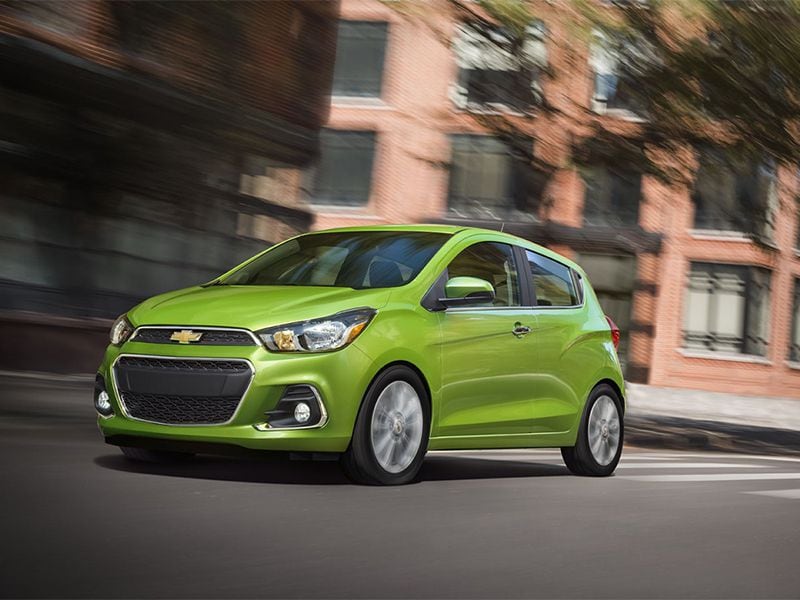
2016 Chevrolet Spark front angle on road in city ・ Photo by Chevrolet
All hatchbacks have their built-in advantages as compared to other body styles, it’s just that the cheapest hatchbacks to insure go even farther, combining those benefits with financial ones. As for those specific hatchback advantages, the key is the extra cargo space: Hatchbacks can have more than three times the total cargo capacity of their sedan counterparts, and those hatches, sometimes referred to as an extra “door,” make loading and unloading particularly easy. Hatchbacks do tend to be more expensive to insure than their sedan variants, though the difference is pretty small. The differences in insurance rates, on the other hand, can be a bit wider, as you’ll see. (We’re extrapolating from 2016 model year info from our friends at Insure.com for all entries, as 2017 data is still a work in progress.)
2017 Smart Fortwo
One of the main reasons the 2017 smart fortwo is one of the cheapest hatchbacks to insure is because there’s a lot less of it to insure as compared to other cars. At a mere 106.1 inches in length, the Fortwo Coupe is more than a yard shorter than the next biggest car here. And yes, despite being called a Coupe, this is a hatchback vehicle with two doors and a rear liftgate. There’s 7.8 cubic feet of storage back there—which is about 70 percent more than in the trunk of a Mazda MX-5 Miata. The average Insure.com rate here, $1,230, also reflects the fact that the Fortwo isn’t all that expensive to start with. Its MSRP for 2017 starts at $14,650.
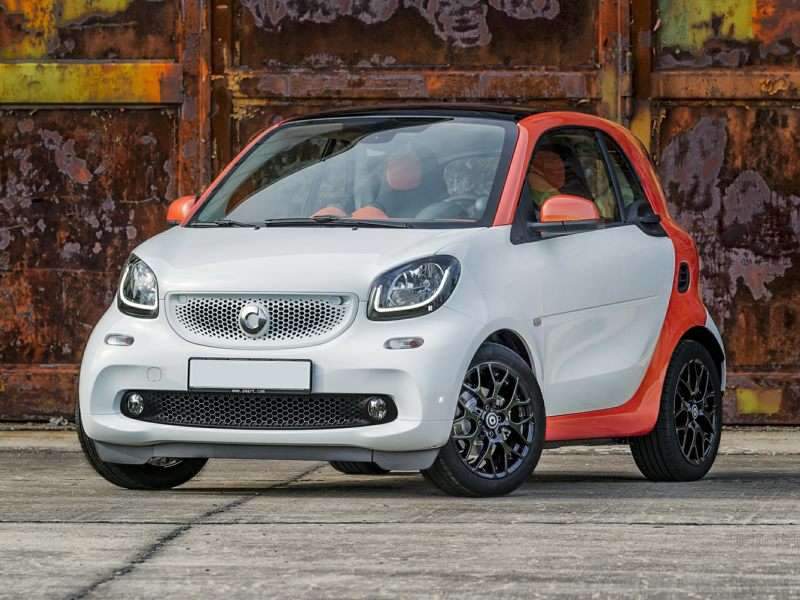
Photo by smart
2016 Fiat 500
Logically enough, the second shortest car in length here comes up second when looking for the cheapest hatchbacks to insure. The 2016 FIAT 500 is 139.6 inches in length, with a 3-door bodystyle and an MSRP of $16,995. Given that price, the 500 works out to be a strong insurance value with our go-to website, since its average coverage rate was $1,274—so it’s cheaper to insure than vehicles that cost thousands of dollars less. Additionally, the 500 showcases distinctive, Italian-influenced styling that still leaves room for up to 9.5 cubic feet of storage space. On the topic of value, customers also should be aware that when the 2017 models arrive in dealerships, the price of admission will fall to $14,995, potentially leading to even lower insurance rates.
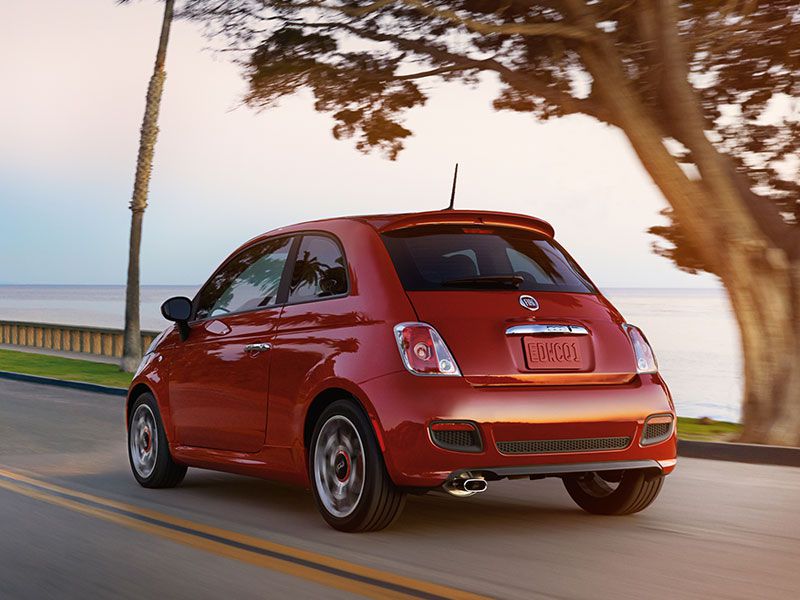
Photo by Fiat Chrysler Automobiles
2017 Honda Fit
Although some automakers charge a premium for the hatchback versions of their small sedans, the 2017 Honda Fit—which has no sedan variant—has become relatively inexpensive. Consider: With an MSRP of $15,990, the Honda undercuts its direct Toyota rival by more than $900, and the Fit is almost $1,600 less expensive than Chevy’s subcompact hatch. Oh, and the Fit’s one of the least expensive hatchbacks to insure, too, backed by a $1,307 average annual premium in the most recent Insure.com data. Honda also manages to fit in a lot of content at that starting price, as the Fit features standard equipment such as Bluetooth connectivity, a multiview rear-vision camera and LED brake lights—and up to 52.7 cubic feet of cargo volume.
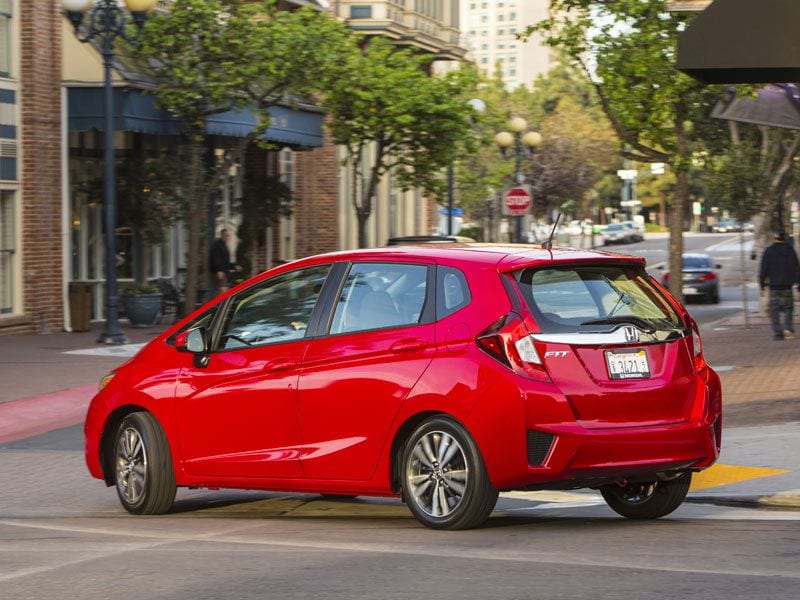
Photo by Honda
2016 MINI Cooper Countryman
For a serious value play, we’d like to present the 2016 MINI Cooper Countryman. The Countryman is the most expensive vehicle on our list of the cheapest hatchbacks to insure, thanks to an MSRP of $22,750. This is almost 10K higher than the sticker price for the low-cost leader here, yet that car—see the Mitsubishi Mirage, soon to come—will cost you more to insure. The Countryman’s Insure.com baseline rate of $1,314 also covers a car that may be larger than you think. The Countryman is the maximum MINI, boasting four doors and 42.2 cubic feet of total cargo space. Shoppers also should know that a brand-new 2017 Countryman is on its way, which is often a recipe for dealer price reductions on 2016 models.
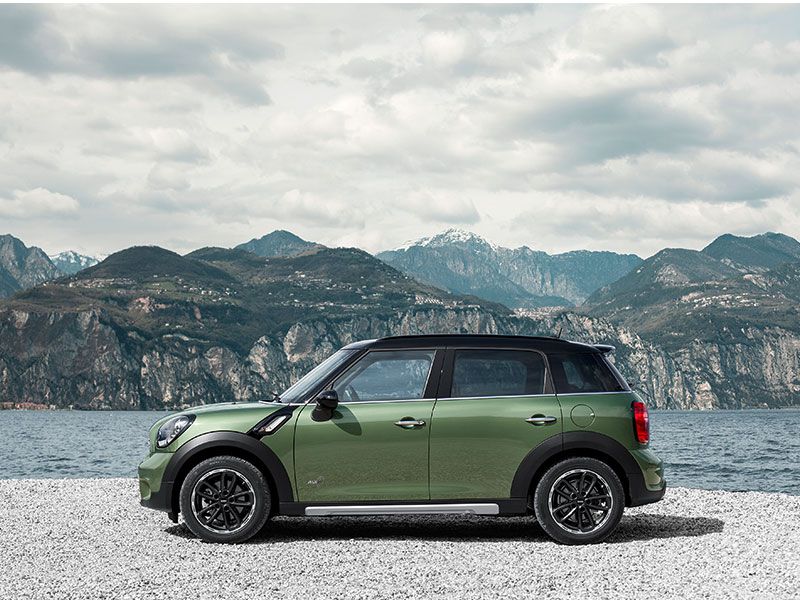
Photo by MINI
2017 Ford Fiesta
The 2017 Ford Fiesta stands out among the cheapest hatchbacks with an especially low MSRP of $14,390. That’s less than for a tiny Smart Fortwo and $1,600 below the starting point for a Honda Fit. Yet the entry-level Fiesta S hatch has standard features like SYNC 3 AppLink technology for voice-activated control over select smartphone apps (leveraging the owner’s compatible phone). Further upscale standard features include a rear decklid spoiler, a rear windshield wiper and Ford’s Easy Fuel capless fuel-filler system. To be sure, the Fiesta S also covers most of the modern-day must-haves, from air conditioning to power door locks. But insurance coverage averaged $1,317 for the most recent full-year period, only $10 more than for the Fit.
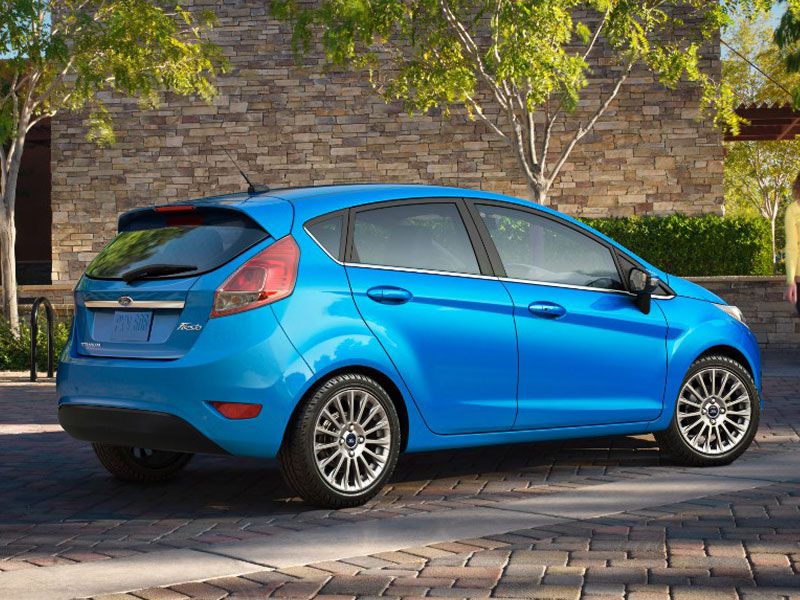
Photo by Ford
2017 Toyota Yaris
Many of the least expensive hatchbacks to insure rely on unique traits to achieve their lower rates, and the 2017 Toyota Yaris is a perfect example. Like the rest of the industry’s subcompact hatches, the Yaris is sold as a 5-door hatchback; unlike its competition, the Yaris also can be configured as a 3-door model that’s both less expensive to buy and less expensive to insure than the 5-door variant. More specifically, the former is priced from $15,250 and had an Insure.com average rate of $1,320, and the latter comes in at $16,375 and $1,358. Moreover, the only major differences in dimension are an extra .3 cubic feet of cargo space and .3 extra inches of rear-seat hiproom for the 5-door Yaris.
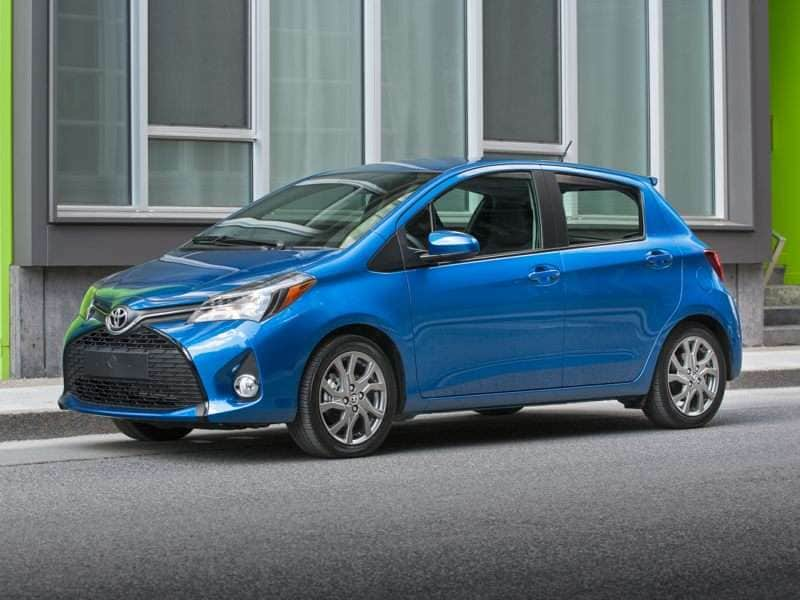
Photo by Toyota
2017 Mitsubishi Mirage
Unsurprisingly, the vehicle that’s literally the least expensive 2017 hatchback in the country also is on the roster of the cheapest hatchbacks to insure. Indeed, the 2017 Mitsubishi Mirage—with an MSRP of $12,995—entered the new model year after an Insure.com average cost rating of $1,337. Now, customers should realize the Mirage is more of a city-sized car, with a length of 149.4 inches. That is, it’s approximately a foot shorter in length than the typical subcompact hatch, and the car’s 3-cylinder engine is better suited for urban driving, as well. The Mirage makes up for that by being mighty efficient, combining EPA ratings of up to 40 MPG with the ability to fit 47 cubic feet of cargo within its nimble dimensions.
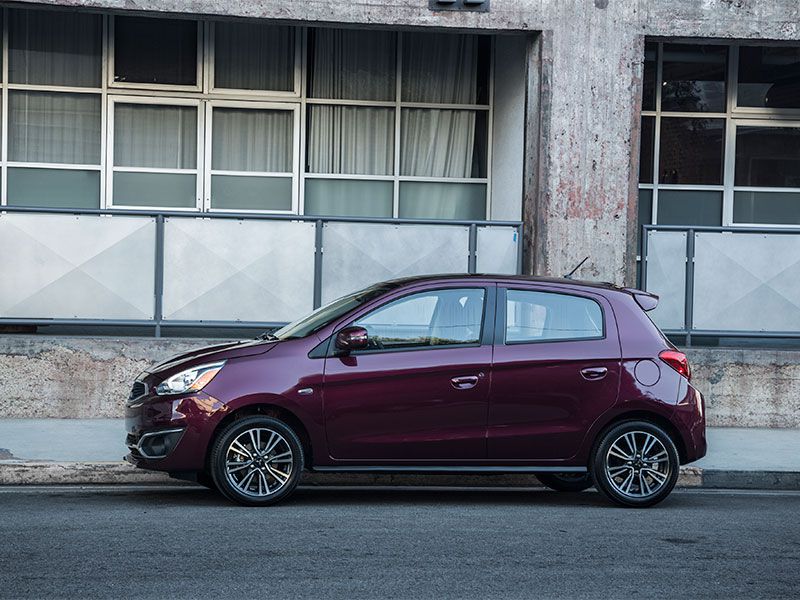
Photo by Mitsubishi
2016 Chevrolet Sonic
Chevy’s cheapest hatchbacks to insure include the 2016 Chevrolet Sonic. The Bowtie brand’s subcompact entry, available in sedan and hatch body styles, had an average coverage cost of $1,354 (according to Insure.com). As a result, it’s actually $28 cheaper to cover than for a comparable Sonic sedan. The hatchback has an obvious lead in cargo space, too: Once the rear seats are folded, the Sonic hatch can hold 47.7 cubic feet of gear; the trunk of the Sonic sedan tops out with 14.9 cubic feet. Also worth noting is that a mobile Wi-Fi hotspot with 4G LTE connectivity is standard on all Sonic models, complete with a free, 3-month/3-gigabyte data trial.
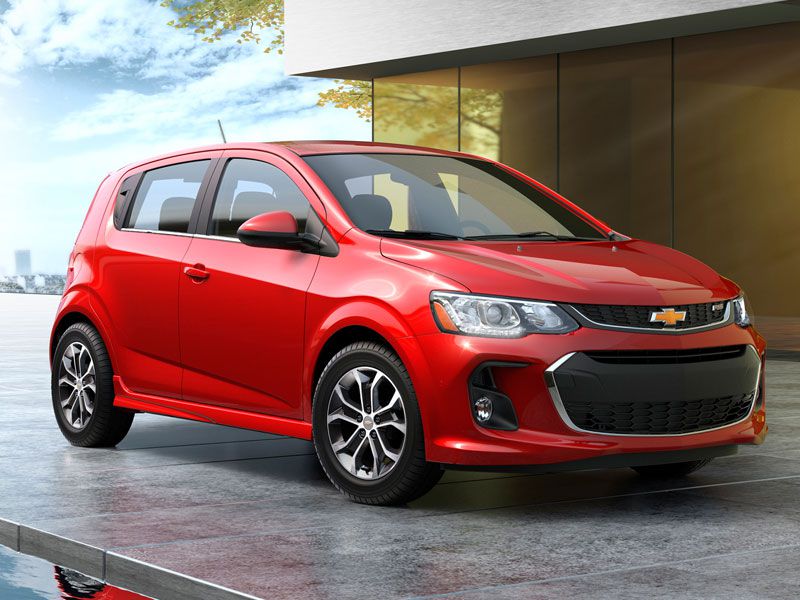
Photo by Chevrolet
2017 MINI Cooper
It’s no doubt a counterintuitive situation: The smaller, 3-door sibling to the previously mentioned 5-door MINI Countryman is the one that’s more costly to cover—again according to Insure.com. To be exact, the baseline rate for the 2017 MINI Cooper was $1,357, making it $37 more expensive. In terms of exactly how MINI the Cooper is, well, the standard model is an agile 151.1 inches in length. Of course, the hatch’s volume and MSRP are smaller, at 34 cubic feet and $20,950, and those tidy proportions also allow owners to enjoy big-time driving thrills. Helping in that regard is a standard TwinPower turbo engine that kicks out 134 horsepower and 162 lb.-ft. of torque.
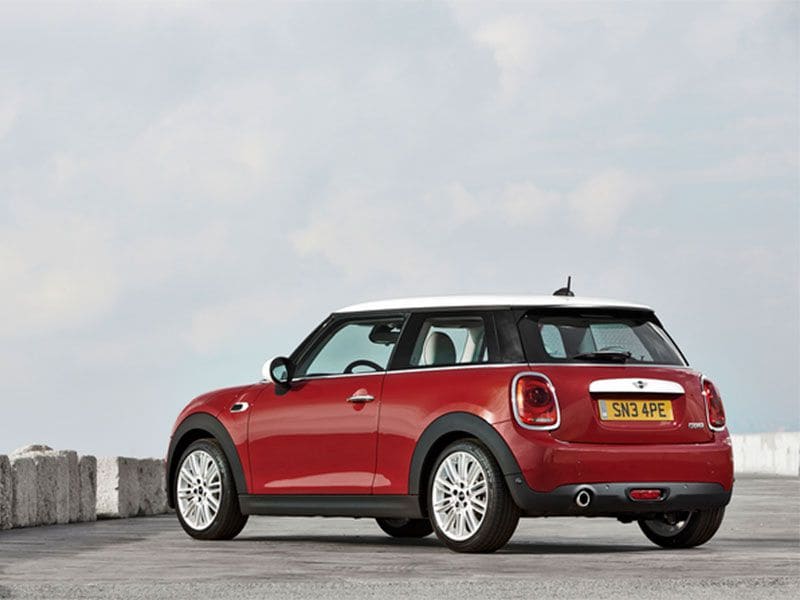
Photo by MINI
2016 Chevrolet Spark
Autobytel expertise comes to the fore at this stage, as we project the 2016 Chevrolet Spark to maintain the same kind of insurance rates as in 2015. During that year, the Spark No. 2 on Insure.com’s honor roll for cheapest cars to insure, where it set the pace for cheapest hatchbacks to insure. True, the Spark was thoroughly redesigned for 2016, debuting available technologies such as a mobile Wi-Fi hotspot, smartphone integration, forward collision alert, lane-departure warning and side blind spot alert. It’s still Chevy’s affordable city-car entry, however, and its insurance coverage both its MSRP of $12,660 and its length of 143.1 inches.
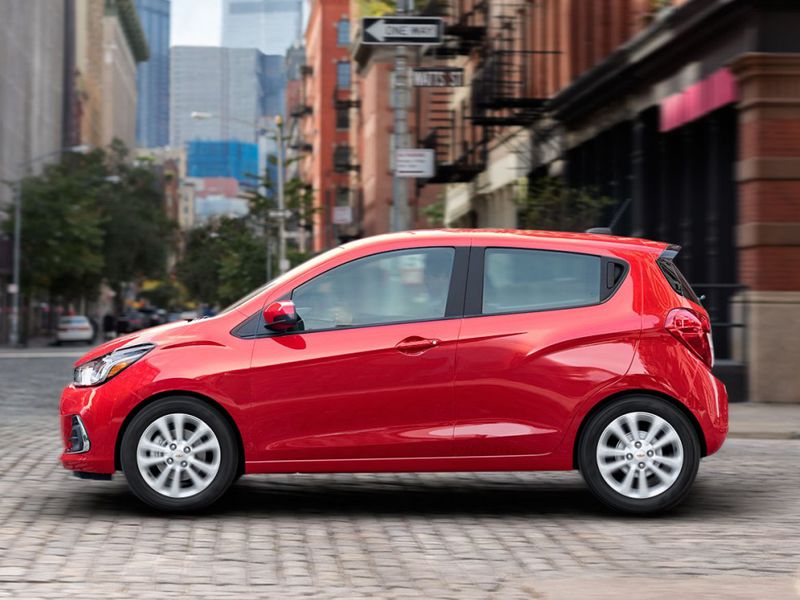
Photo by General Motors